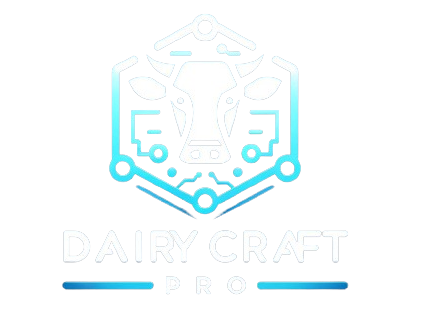Complete Guide: How to Open Your PayPal Account and Add a Card to Your Wallet

Complete Guide: How to Open Your PayPal Account and Add a Card to Your Wallet In the digital era, having a PayPal account allows you to shop online securely and send or receive money without hassle. In this post, we explain step by step how to create your PayPal account and, once activated, add a debit or credit card so you can start making transactions immediately. 1. How to Open a PayPal Account Step 1: Visit the Official PayPal Website Go to www.paypal.com and select the “Sign Up” option. You can choose between a Personal account or a Business account, depending on your needs. Most users opt for a Personal Account, ideal for making purchases and sending money. Step 2: Complete the Registration Enter your email address: This will be your username for logging in. Create a secure password: Choose a strong combination that includes letters, numbers, and symbols. Provide your personal details: Full name, address, phone number, and any other information required by PayPal. Accept the Terms and Conditions: Read through the user agreement and proceed with the registration. Step 3: Verify Your Account After completing the registration form, PayPal will send you a confirmation email. Click on the verification link provided to activate your account. Once verified, you’re ready to receive funds. 2. How to Add a Debit or Credit Card to Your PayPal Wallet Once your account is active, the next step is to associate a card so you can quickly make payments and purchases. Step 1: Log into Your Account Sign in to your PayPal account either via the website or the mobile app. Step 2: Go to the “Wallet” Section From the main menu, select “Wallet.” Here, you can view your associated payment methods and add new ones. Step 3: Add a New Card Click on “Link a debit or credit card”: On the website: Look for the “Link a Card” button. On the app: Tap the “+” icon next to “Bank accounts and cards.” Enter your card details: Card number Expiration date Security code (the three digits on the back of your card—or four if it’s an American Express) Billing address (make sure it matches the information your card issuer has on file) Step 4: Card Verification PayPal may perform a small temporary charge to verify your card’s validity. This amount will be automatically refunded once verification is complete. Note that with an unverified account, you can add up to 4 cards; once verified, this limit increases. 3. Banks That Facilitate Opening and Linking Your PayPal Account In regions such as the Dominican Republic, many users have found that having a bank account with reputable institutions like El Banco Popular can simplify the process of linking your card and verifying your account. Account with El Banco Popular:Having an account—whether savings or checking—with El Banco Popular can ease the process of associating your card with PayPal, as the system recognizes the validity of the registered information. Moreover, with Internet Banking enabled and a security token from the bank, the verification process tends to be smoother. Additional Tip:If you experience difficulties linking a local bank card, ensure that the billing address entered in PayPal exactly matches the address registered with your bank. If the issue persists, contacting your bank or PayPal’s customer support may help resolve the problem. 4. Security and Best Practices Protect Your Data: Use a unique password and enable two-step verification for enhanced security. Check Billing Details: Make sure the billing address registered in your PayPal account matches that of your bank. Monitor Your Transactions: Regularly review your account history to detect any suspicious activity. 5. Frequently Asked Questions What should I do if my card isn’t linking properly?Verify that the information entered (card number, expiration date, and security code) is correct. If the problem persists, contact PayPal customer service or consult with your bank. Can I add more than one card?Yes, with an unverified account, you can link up to 4 cards. After verifying your account, you can add up to 24 cards. Is it safe to use PayPal?PayPal employs advanced security measures and buyer protection, making it one of the most reliable online payment methods available. 6. Conclusion Creating a PayPal account and adding a card to your wallet is a straightforward process that opens the door to secure and convenient online transactions. Moreover, having a bank account with a reputable institution like El Banco Popular can simplify the linking and verification process, especially for users in regions like the Dominican Republic. If you have any questions or need more details, feel free to leave a comment or visit the PayPal Help Center. Sources consulted: paypal.compaypal.compaypal.com We hope this guide helps you start using PayPal safely and efficiently!
The Importance of Dairy Management for Cheese and Yogurt Producers
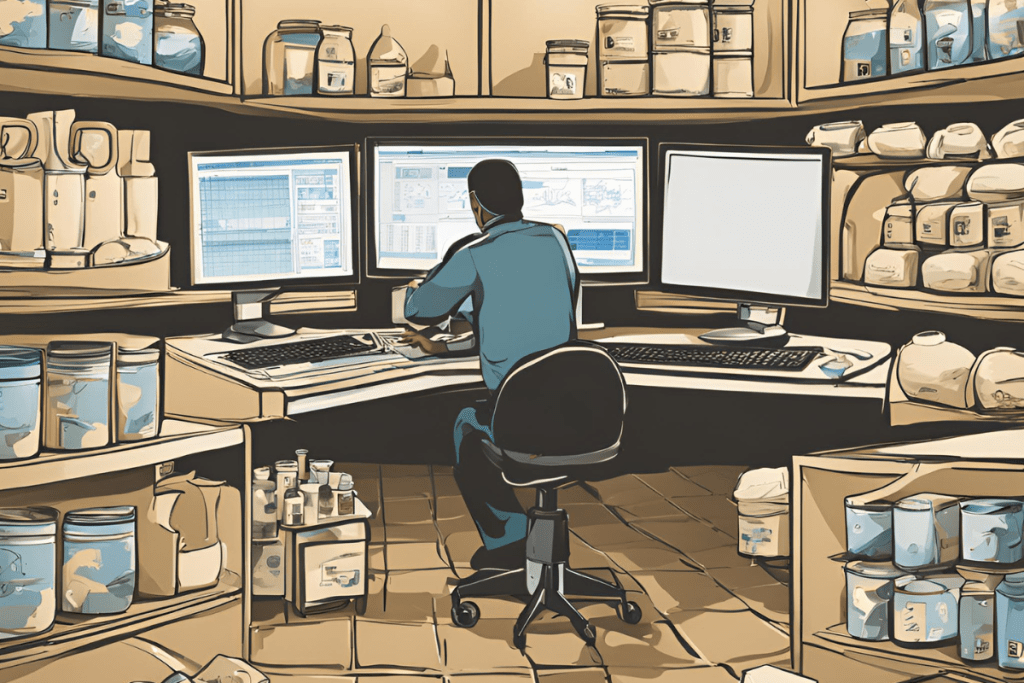
The Importance of Dairy Management for Cheese and Yogurt Producers Dairy production in the United States is a multifaceted enterprise where efficient management practices are crucial for producing high‐quality milk that transforms into beloved products like cheese and yogurt. With a rich heritage of family‐owned farms and a modern industry that leverages state‐of‐the‐art technology, effective dairy management is the backbone of a thriving dairy sector. In this post, we explore the significance of dairy management in the U.S., delve into key practices such as proper milking procedures and feed management, discuss challenges—including market fluctuations and regulatory compliance—and examine how emerging technology is reshaping the industry. We then consider the benefits of optimal management for product quality and profitability, and look ahead to future trends focusing on sustainability and evolving consumer demands. Introduction to Dairy Management in the United States Dairy management is more than just running a farm; it is the careful orchestration of every step—from milk production to processing—that ensures the consistency and quality of dairy products. In the United States, where dairy operations range from small, family-owned farms to large-scale cooperative enterprises, managing resources efficiently is paramount. Milk, which contains about 87% water along with proteins, fats, lactose, and minerals, is the primary raw material for cheese and yogurt. The way in which this milk is handled and processed ultimately influences product characteristics such as texture, flavor, and nutritional value. Over the past several decades, the U.S. dairy industry has experienced significant consolidation, with fewer farms but larger herd sizes. This evolution has placed increased pressure on dairy managers to optimize every aspect of production—from milking and animal health to feed composition and environmental stewardship. With consumers demanding consistent quality and sustainability, effective dairy management is now recognized as a critical factor in remaining competitive in a rapidly changing market. Modern dairy management practices integrate traditional know-how with innovative technologies. The adoption of digital tools for real-time monitoring, automated milking systems, and data-driven decision-making are revolutionizing how dairy farms operate. For cheese and yogurt producers, these practices directly impact the yield, quality, and safety of their products. In a landscape marked by tight margins, environmental challenges, and fluctuating market prices, dairy management is both an art and a science—a balancing act that ensures not only profitability but also long-term sustainability. Overview of the Dairy Industry The U.S. dairy industry is a major economic driver that contributes billions of dollars to the national economy while providing employment and supporting rural communities. Milk and dairy products such as cheese and yogurt are produced in virtually every state, with key regions including California, Wisconsin, and New York leading the charge. Dairy farmers must contend with an ever-changing environment: fluctuating input costs, shifting consumer preferences, and stringent regulatory requirements. Despite challenges, the dairy industry has maintained a high standard of product quality through rigorous management and technological innovation. From the moment raw milk is collected, strict protocols are followed to ensure its safety and composition meet regulatory standards. These include daily testing for bacterial and somatic cell counts and careful control of milk components through pasteurization and homogenization. In recent years, the industry has also focused on value-added products such as specialty cheeses and probiotic-rich yogurts. As consumer demand for organic and functional foods increases, dairy processors have diversified their product portfolios while maintaining efficiency and quality. The integration of sustainability practices and advanced data analytics has further enabled the industry to adapt to market pressures and environmental challenges. Significance of Effective Dairy Management Effective dairy management is the cornerstone of a resilient dairy business. At its core, it ensures that every drop of milk is maximized in terms of quality and yield, which is particularly crucial for cheese and yogurt production. A well-managed dairy operation optimizes animal health, enhances milk quality, and drives overall productivity. When dairy farms implement best practices in milking, feeding, and facility management, they create a stable production system that can weather economic and environmental fluctuations. For cheese and yogurt producers, the benefits are twofold. First, maintaining high-quality milk with consistent composition leads to more predictable processing outcomes—resulting in cheeses with the desired texture and flavors and yogurts that maintain their creaminess and nutritional benefits. Second, efficient management practices reduce waste, lower operating costs, and improve profitability. In an industry where margins can be thin, these efficiencies are critical. Moreover, effective dairy management supports regulatory compliance and enhances sustainability. With increasing scrutiny on environmental impacts, farmers who adopt best practices in manure management, water conservation, and energy efficiency not only comply with regulations but also position themselves as leaders in sustainable agriculture. In turn, these practices build consumer trust and can even command premium prices in the marketplace. Key Practices in Dairy Management Milking Procedures The milking process is arguably the most critical step in dairy management. Efficient and hygienic milking procedures ensure that milk is collected safely and with minimal contamination. Modern milking systems often employ automated milking machines that standardize the process and reduce the risk of human error. These systems help maintain the sterility of milk, reduce the incidence of mastitis (an infection in the udder), and ensure that each cow’s yield is recorded accurately for further analysis. Routine maintenance and proper sanitation of milking equipment are essential. Dairy farms implement strict cleaning protocols—often using Clean-In-Place (CIP) systems—to ensure that all equipment is thoroughly sanitized between milkings. This practice minimizes bacterial contamination and helps maintain low somatic cell counts, which are vital for producing high-quality milk that is ideal for cheese and yogurt production. Furthermore, regular training of farm personnel on proper milking techniques contributes to consistent milk quality. Farmers monitor key performance indicators such as milk flow rate, cow comfort, and milking speed to continuously improve the process. These data-driven insights allow dairy managers to identify issues quickly and adjust protocols as necessary. Feed Management Feed management is another cornerstone of dairy management. The nutritional content of the feed directly influences the composition and quality of milk. Dairy producers invest significant time
Dairy Production: Exploring Cheese and Yogurt Production
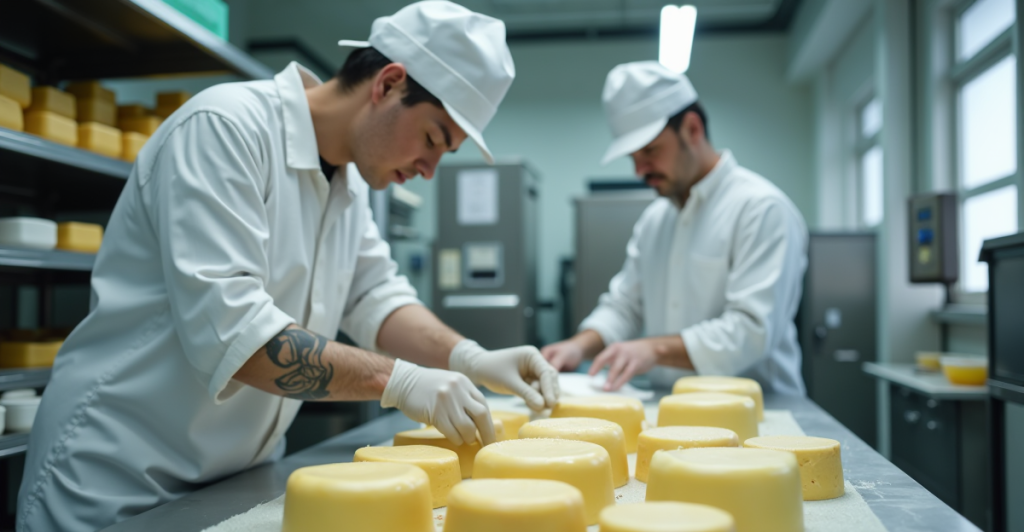
Dairy Production: Exploring Cheese and Yogurt Production Dairy production is one of the oldest and most essential food processing industries in the world. From the humble origins of pastoral societies to today’s state‐of‐the‐art industrial systems, the transformation of milk into products such as cheese and yogurt has been both an art and a science. In this post, we explore the processes and techniques used in cheese and yogurt production, discuss the unique characteristics of various cheese types and yogurt, examine some of the nutritional benefits and challenges inherent in dairy production, and look ahead to future sustainable and innovative practices. Whether you’re a food enthusiast, an industry professional, or simply curious about how these dairy staples are made, read on for a comprehensive journey into dairy production. Introduction to Dairy Production Milk is more than just a beverage; it is a complex biological fluid composed of approximately 87% water, along with proteins (mainly casein), fats, lactose, vitamins, and minerals. This high water content makes milk a unique starting material that, with the proper techniques, can be transformed into an astounding variety of products. Dairy production encompasses the entire value chain—from farm to processing plant—ensuring that the raw milk is transformed into safe, high‐quality foods that meet both consumer and regulatory standards. Modern dairy production balances tradition with technological innovation. While ancient cheesemakers relied on intuition and experience, today’s industry uses precise temperature control, microbial starters, and mechanical equipment to standardize and optimize production. Consumers enjoy a wide array of dairy products with distinct flavors, textures, and nutritional profiles, a testament to the ingenuity and adaptability of the dairy sector. Cheese Production: Process and Techniques Cheese making is a multi‐step process in which milk is transformed into a solid, flavorful product through coagulation, curd processing, and aging. Although there are hundreds of cheese varieties, the fundamental techniques remain similar, with variations in time, temperature, and handling creating the wide diversity of cheeses available today. Overview of the Cheese Making Process The cheese making process typically begins with the collection and pasteurization of milk. Pasteurization ensures that harmful microorganisms are eliminated while preserving the essential components of the milk. Once pasteurized, the milk is standardized for fat and protein content, ensuring consistency from batch to batch. Next, specific starter cultures—microorganisms selected for their ability to ferment lactose into lactic acid—are added to the milk. This fermentation process is crucial because the lactic acid produced helps lower the pH of the milk, making it an ideal environment for coagulation. Once the desired acidity is reached, rennet (a natural enzyme complex) is added. Rennet causes the casein proteins to clot, forming a gel-like structure that eventually separates into curds (the solid) and whey (the liquid). The curds are then cut into small pieces to encourage the expulsion of whey. The size of the curd pieces is critical; smaller pieces allow more whey to escape, which is often desired for harder cheeses, whereas larger curds retain more moisture and yield softer cheeses. Following cutting, the curds may be cooked or stirred—steps that further influence moisture content and texture. After cooking, the curds are pressed to consolidate the mass and remove any residual whey, and salt is added for flavor, preservation, and to assist in the final texture development. Finally, the cheese is aged for a period that can range from a few days to several years. Aging allows flavors to develop, and the reduction of moisture during this stage can result in a firmer, more complex product. Each step—from pasteurization to aging—requires careful control of water removal and temperature to ensure that the cheese meets its intended quality specifications. Varieties of Cheese and Their Unique Features The world of cheese is diverse. Soft cheeses, such as Brie, Camembert, or fresh goat cheese, retain a higher moisture content and have a creamy, spreadable texture. Their short aging times and gentle processing yield a product that is delicate in both flavor and texture. In contrast, hard cheeses like Cheddar, Gouda, or Parmesan are subjected to more rigorous water removal and longer aging periods. The result is a drier, crumbly product with concentrated flavors and often crystalline textures that develop with time. Semi-soft and semi-hard cheeses fall between these extremes, offering a balance of moisture, texture, and flavor. For example, cheeses like Havarti or Monterey Jack have moderate moisture content that allows them to melt well, making them popular choices for culinary applications. Each variety of cheese is a result of subtle differences in processing techniques—such as curd cutting size, cooking temperature, and pressing time—that ultimately affect water content, fat concentration, and protein structure. Cheese makers also differentiate products by the type of milk used (cow, goat, or sheep) and by additional ingredients or processing methods. Artisanal cheeses often reflect regional traditions and natural variations in milk composition, while industrial cheeses are produced under strict process controls to ensure consistency. Regardless of the method, water remains a central element in determining both the texture and yield of cheese. Yogurt Production: From Milk to Yogurt While cheese making involves the deliberate removal of water to concentrate milk solids, yogurt production focuses on creating a stable gel in which water is retained. The result is a product that is creamy, tangy, and rich in probiotics. The Fermentation Process in Yogurt Making Yogurt is produced by fermenting milk with specific bacterial cultures. After pasteurization and homogenization, the milk is cooled to an optimal temperature (typically around 40–45°C) for bacterial growth. Starter cultures—commonly a combination of Streptococcus thermophilus and Lactobacillus delbrueckii subsp. bulgaricus—are then added. These bacteria ferment lactose, the sugar in milk, into lactic acid. As lactic acid accumulates, the pH of the milk drops. When the pH reaches approximately 4.5–4.6, the casein proteins in the milk begin to coagulate and form a gel network. This network traps water and fat, resulting in the characteristic texture of yogurt. The rate of acidification, the temperature maintained during fermentation, and the duration of fermentation all influence the final product. Shorter fermentation times
The Impact of Water Content on Texture and Yield in Cheese and Yogurt
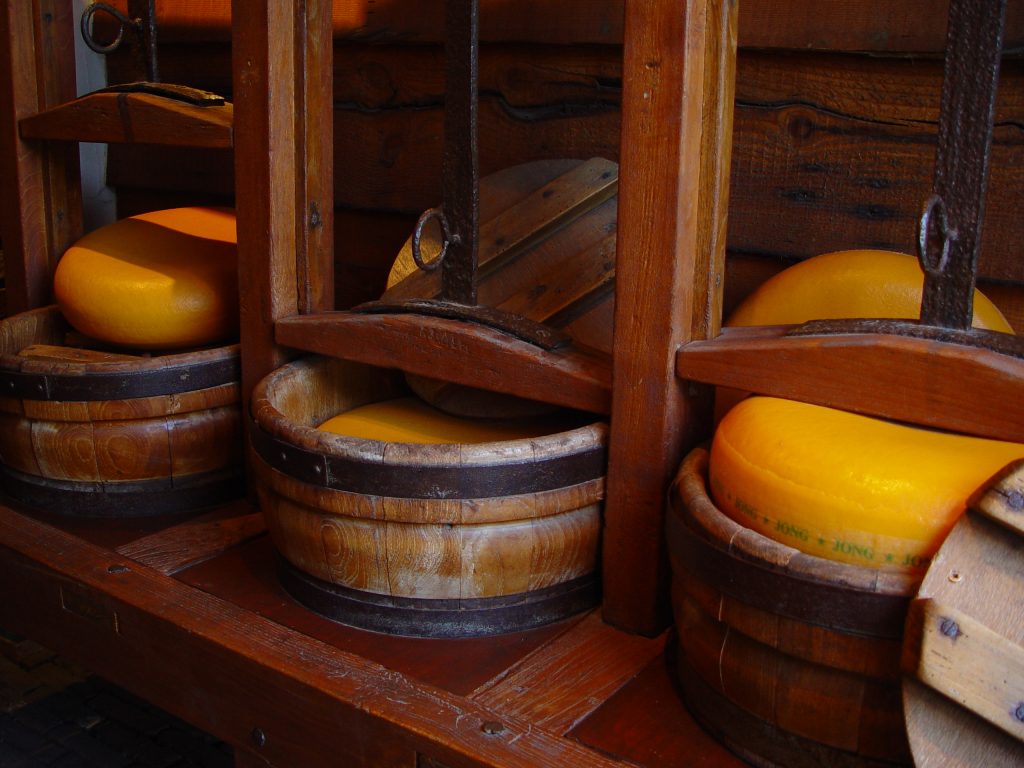
The Impact of Water Content on Texture and Yield in Cheese and Yogurt Water is often overlooked in dairy processing—even though it is one of the most important components in determining both texture and yield. From the moment milk is collected, water influences every subsequent step: it helps form the protein network in yogurt, determines the firmness of cheese, and affects the overall yield of these products. In this post, we explore how water content shapes the texture and yield in cheese and yogurt. We will discuss water’s role in dairy products, its influence during cheese and yogurt production, how it modifies texture in various cheeses and yogurt styles, and the yield implications. We then turn to strategies for optimizing water management in dairy processing before concluding with emerging research directions. Understanding Water Content in Dairy Products Milk is an emulsion that contains approximately 87% water along with proteins, fats, lactose, vitamins, and minerals. In dairy products, water is not simply a solvent; it interacts with milk proteins—most notably casein—to form gels and structures. In both cheese and yogurt, water content is the major variable that can be controlled to tailor texture, flavor, and yield. In cheese, water is gradually removed during curd processing, while in yogurt, water remains bound within a gel network formed during fermentation. Because water influences the concentration of proteins and fats, even small adjustments to moisture levels can have pronounced effects on the final product. The Role of Water in Cheese Production Cheese production is a multistep process where water is both intentionally removed and sometimes recycled. The journey begins with milk coagulation—achieved by adding rennet or acid—which creates a curd that traps water within its protein matrix. After the curds are formed, they are cut into pieces to increase surface area, which facilitates whey (the liquid part) separation. Additional steps like cooking, stirring, and pressing further remove water to create a denser curd. In hard cheeses, extensive moisture loss leads to a firm, sliceable product, while soft cheeses retain more water, resulting in creamier textures. The art of cheese making involves striking the right balance: too much water may produce a weak, bland cheese; too little, and the product may become dry and crumbly. The Role of Water in Yogurt Production Yogurt production is fundamentally different from cheese making. Instead of removing water, the process focuses on transforming milk into a gel by fermentation. Lactic acid bacteria—typically a blend of Streptococcus thermophilus and Lactobacillus delbrueckii subsp. bulgaricus—convert lactose into lactic acid, lowering the pH. As the pH drops, casein proteins coagulate to form a three-dimensional gel that traps water and fat. This gel network determines the yogurt’s creaminess and body. If too much water is expelled (for example, during straining), the yogurt may become too thick or “set” into a labneh-like product. Conversely, insufficient water retention can lead to a runny texture. Thus, managing water content is key to achieving the desired consistency, whether producing a spoonable set yogurt or a drinkable style. How Water Content Influences Texture in Cheese The texture of cheese is largely determined by its moisture content. During cheese production, water is gradually removed, concentrating the proteins and fats that give cheese its structure. In softer cheeses, higher water content results in an elastic and creamy texture. In harder cheeses, lower moisture levels create a firmer matrix that can even lead to the development of crystalline structures as the product ages. For instance, artisanal cheeses with controlled moisture removal often achieve a delicate balance between smoothness and firmness. Conversely, if water is removed too aggressively, the cheese may become overly dry and lose the subtle creaminess that makes it enjoyable. The Effects of Moisture on Hard and Soft Cheeses Soft cheeses—such as Brie, Camembert, or fresh goat cheese—retain a high percentage of water. This results in a tender, spreadable texture that is ideal for direct consumption. However, the high moisture content also makes them more perishable and susceptible to microbial spoilage. In contrast, hard cheeses like Cheddar or Parmesan are pressed for longer periods and aged extensively, resulting in lower moisture levels. These cheeses exhibit a crumbly or granular texture and often develop more complex flavors over time. In both cases, even a slight deviation from the optimum moisture level can lead to a noticeable difference in texture and overall mouthfeel. Case Studies of Texture Variations in Cheeses Research has demonstrated that slight modifications in water removal techniques can cause marked differences in cheese texture. For example, studies on Cheddar have shown that variations in pressing time and cooking temperature can lead to changes in water retention, which in turn affect firmness and meltability. Artisanal cheesemakers often rely on traditional practices that have been refined over centuries, yet modern analytical techniques now allow for the precise control of moisture content to achieve a targeted texture profile. These case studies highlight the importance of water management as a critical lever in cheese production. The Impact of Water on Yogurt Texture Similar to cheese, water content in yogurt plays a decisive role in its texture. The process of fermentation creates a gel network where water is entrapped among proteins. However, post-fermentation practices such as stirring, straining, or the addition of stabilizers can alter this network. For example, a thicker, creamier yogurt is often achieved by straining out excess whey, as seen in Greek yogurt, while regular yogurt maintains a more fluid consistency. Any imbalance in water content can lead to textural defects such as syneresis (whey separation), which detracts from the sensory appeal of the product. The Importance of Water in Greek vs. Regular Yogurt Greek yogurt is distinguished by its lower water content, achieved through straining out much of the whey, resulting in a dense and creamy product. Regular yogurt, on the other hand, retains more water and is therefore lighter in texture. This difference in water content not only affects mouthfeel but also influences nutritional content and yield. Consumers often choose Greek yogurt for its higher protein concentration and
Greece: The Birthplace of Yogurt
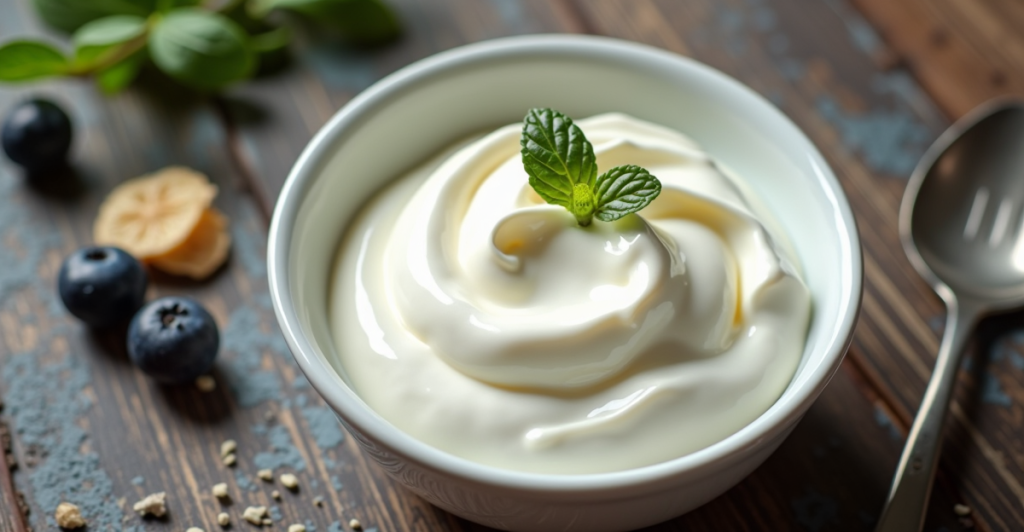
Greece: The Birthplace of Yogurt Greece: The Birthplace of Yogurt IntroductionWhen you hear “Greek yogurt,” you likely envision the rich, creamy dairy product that’s packed with protein and beloved worldwide. But how did this quintessential yogurt style become so popular? And why does its origin matter? Let’s take a journey to Greece—the land where yogurt’s ancient traditions, unique production methods, and Mediterranean flair shaped one of the world’s most iconic dairy products. A Brief History of Yogurt in Greece Ancient Roots Yogurt-making is believed to have existed in Greek culture (and neighboring regions) for millennia. Early nomadic tribes likely discovered that milk, carried in goat or sheep skins, naturally fermented into a thick, tangy substance. Culinary Heritage Historical texts refer to oxygala, a fermented dairy product from Classical Greece. While it differs from today’s strained yogurt, it highlights how fermentation was a critical part of Greek gastronomy. Cultural Significance In many Greek households, yogurt was (and often still is) made fresh, serving as a staple in daily meals. Beyond its use as a simple snack, yogurt is a foundation for dips like tzatziki and sauces that accompany savory dishes. Traditional Production Methods Sheep’s Milk vs. Cow’s Milk Historically, Greek yogurt was made with sheep’s milk, which imparts a slightly richer flavor. Nowadays, cow’s milk is more common globally, but many artisanal producers in Greece still prefer sheep’s milk for authenticity. Straining for Thickness The defining feature of Greek yogurt is its straining process. After fermentation, whey (the liquid part) is removed, leaving a thicker, creamier yogurt with a higher protein content. Natural Fermentation Traditional Greek yogurt relies on bacterial cultures (e.g., Streptococcus thermophilus and Lactobacillus bulgaricus) for a tangy flavor. Greek producers often avoid artificial thickeners, leaning on straining to achieve the trademark texture. Attention to Detail Family-owned dairies and yogurt shops in Greece monitor everything from milk quality to temperature control, ensuring a consistent final product. This focus on artisanal care underpins Greek yogurt’s reputation for superior taste and texture. Rise in Global Popularity Nutritional Appeal Greek yogurt is high in protein, lower in carbohydrates (due to straining out some lactose), and typically has fewer additives. These health benefits appeal to consumers seeking natural, protein-rich foods. Versatility in Modern Cuisine From smoothies to parfaits and dips, Greek yogurt has found a home in recipes around the globe. It also serves as a nutritious substitute for high-fat ingredients like sour cream or mayonnaise. Crossover into Wellness Trends With increased interest in the Mediterranean diet—which emphasizes whole foods, healthy fats, and lean proteins—Greek yogurt fits neatly into a health-conscious lifestyle. Mass Market Adoption Initially marketed in the U.S. and European supermarkets as a premium product, Greek yogurt eventually entered the mainstream. Major food companies expanded their Greek yogurt lines, propelling it from a specialty item to a daily staple. Key Characteristics That Set Greek Yogurt Apart Thicker, Creamier Consistency: Achieved through the straining process, making it distinct from regular yogurt. Tangy Flavor Profile: Due to the fermentation cultures and slightly higher acidity. Higher Protein Content: As the whey is removed, protein becomes more concentrated. Lower Carbohydrates: Ideal for those watching their sugar intake, since a portion of lactose is strained out. Tips for Making Greek-Style Yogurt at Home Choose Quality Milk Whether you opt for sheep’s, goat’s, or cow’s milk, freshness matters. If possible, source from local dairies with minimal processing. Use a Reliable Starter Culture A yogurt starter containing Lactobacillus bulgaricus and Streptococcus thermophilus will produce the tangy flavor Greek yogurt is known for. Mind the Temperature Most yogurt cultures thrive between 110–115°F (43–46°C). Maintaining a steady temperature is key to successful fermentation. Strain Gradually After fermentation, line a colander with cheesecloth or a fine mesh. Allow the yogurt to strain in the refrigerator for several hours (or overnight) to reach desired thickness. Experiment with Flavors Traditional Greek yogurt is plain, but you can add honey, fruit compotes, or herbs to create a personalized flavor profile. Enjoying Greek Yogurt, Greek-Style If you find yourself in Greece, you’ll notice yogurt is often served drizzled with local honey and sprinkled with walnuts. This simple preparation highlights the yogurt’s natural acidity and creaminess. With its deep roots in Greek culinary history, Greek yogurt is more than a health food—it’s a cultural touchstone, bridging ancient traditions with modern palates. References Hloucha, M. (2017). The Greek Yogurt Kitchen: More Than 130 Delicious, Healthy Recipes for Every Meal of the Day. Provides insight into using Greek yogurt in various recipes and elaborates on its nutritional benefits. Sutton, D. (2010). Secrets from a Greek Kitchen. Offers a cultural and historical perspective on traditional Greek cooking methods, including yogurt production. Fox, P.F., McSweeney, P.L.H. (eds.). (2013). Advanced Dairy Chemistry: Volume 2: Lipids. Contains technical information about milk chemistry, useful for understanding why Greek yogurt has a unique fat and protein profile. Tsakalidou, E., & Papadimitriou, K. (eds.). (2016). Fermented Foods at Every Meal: The Greek Yogurt Story. Discusses the microbiology of yogurt fermentation and the role of specific bacterial cultures in creating Greek yogurt’s tangy flavor. U.S. Food & Drug Administration (FDA) – Dairy Products Regulations https://www.fda.gov/food Outlines basic standards and regulations for yogurt production, labeling, and safety in the United States. Have you tried making Greek yogurt at home, or do you have a favorite Greek yogurt recipe? Share your experiences in the comments below, and stay tuned for more explorations into the world of cultured dairy in our next DairyCraftPro blog post!
Calculating Milk Density: A Step Toward Consistent Quality
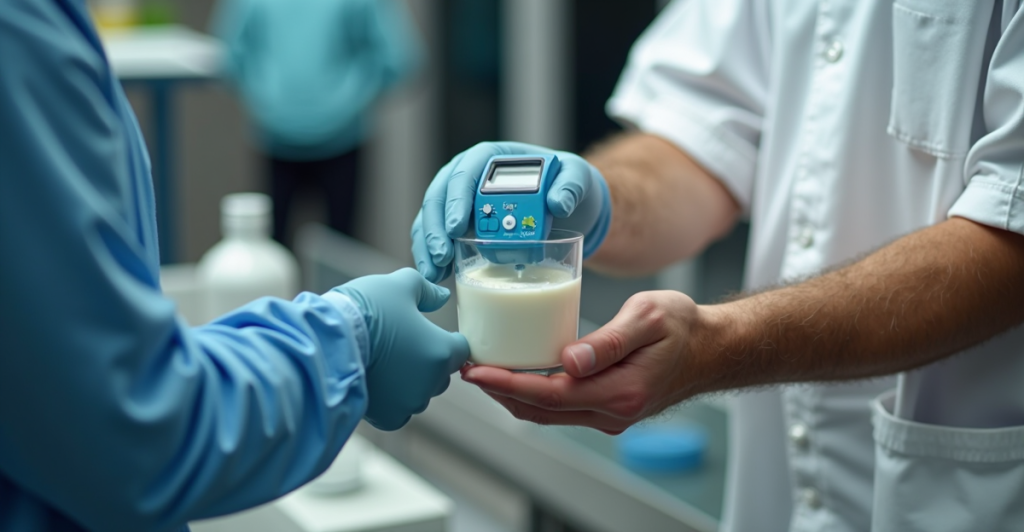
Calculating Milk Density: A Step Toward Consistent Quality Welcome to the DairyCraftPro blog! Today, we’re focusing on a fundamental aspect of dairy product quality: milk density. Understanding and accurately measuring milk density is key to optimizing cheese yields, maintaining consistency in yogurt and ice cream, and meeting precise industry standards. Read on to learn how to use DairyCraftPro’s milk density calculator and why these measurements matter to every dairy producer—from artisanal cheesemakers to large-scale operations. Why Does Milk Density Matter? Yield Optimization Knowing milk density helps cheesemakers precisely calculate how much cheese they can expect from a given volume of milk. Accurate yields translate to better planning, less waste, and higher profits. Consistent Quality Uniform density means uniform composition. This ensures every batch of cheese, yogurt, or ice cream has the same texture, flavor, and nutritional profile. Cost Control By understanding milk density, you gain insight into the ratio of fat, protein, and other solids. This knowledge helps you manage ingredient costs more efficiently (e.g., adjusting formulas in processed products or premium cheeses). Regulatory Compliance Many regions have specific standards for milk and dairy products. Monitoring density supports compliance with regulations regarding composition and labeling. Using DairyCraftPro’s Milk Density Calculator DairyCraftPro offers a free, easy-to-use tool to help you quickly determine the density of your milk. Here’s how it works: Gather Your Data You’ll need two main inputs: Weight (mass) of your milk sample (in grams or pounds). Volume of your milk sample (in milliliters, liters, or fluid ounces). Enter Values Go to the DairyCraftPro Milk Density Calculator (found in our resources section). Input the weight and volume. Select the appropriate units from the drop-down menu. Review Your Results The calculator instantly displays the density (e.g., g/mL or lb/ft³), depending on the units chosen. You’ll also see a reference range for typical cow’s milk density (around 1.028 to 1.035 g/mL at 20°C/68°F) so you can compare your sample against standard values. Adjust & Document Use the result to fine-tune your processes—like adjusting cultures for cheesemaking or verifying if your supplier’s milk meets specifications. Keep a record of your calculations to track seasonal changes in milk composition or troubleshoot variability in product batches. Pro Tips for Accurate Measurements Calibrate Your Scale Ensure scales are zeroed and regularly calibrated. Even slight miscalibrations can skew density calculations. Standardize Temperature Milk density changes with temperature. If possible, measure and record density at a consistent temperature (often 20°C/68°F is recommended). Use a Clean Container Residues or films on containers can alter the effective volume. Clean and dry all equipment before measuring. Take Multiple Measurements For critical processes, take at least two or three readings to confirm accuracy. Document Changes Seasonal shifts in feed or breed variations can impact milk composition (and thus density). Keep thorough records for long-term insight. Real-World Applications Cheese Production: A consistent cheese yield depends on predictable solids (fat/protein) in milk. Knowing density helps gauge these components and optimize your culture, rennet, and coagulation times. Yogurt and Fermented Milks: Targeting a specific density can help achieve the creamy, spoonable texture consumers expect. Ice Cream Production: Accurate density ensures the ideal balance of fat, sugar, and air incorporation, resulting in perfect mouthfeel and overrun. Regulatory Standards: In many countries, the minimum milk fat and solids-not-fat percentages are mandatory for labeling. Density measurements can help confirm compliance. Frequently Asked Questions What if my milk density is below typical range? This could indicate lower fat or protein content, possibly due to breed differences, feed changes, or adulteration. Consider verifying milk quality and speaking with your supplier. Do I need specialized equipment to measure density? Not necessarily. A precise scale and a graduated container often suffice. Our calculator does the math once you have weight and volume measurements. Is milk density the same as specific gravity? They’re closely related. Specific gravity is the ratio of the density of milk to the density of water. The calculator’s output can be used to determine specific gravity as well. How often should I measure density? That depends on your production scale and quality requirements. Some artisan dairies measure daily or per batch; larger operations may sample multiple times throughout the day for quality control. References Walstra, P., Wouters, J.T.M., & Geurts, T.J. (2006). Dairy Science and Technology (2nd ed.). A comprehensive overview of milk composition, processing, and the science behind dairy transformations. Fox, P.F., Uniacke-Lowe, T., McSweeney, P.L.H., & O’Mahony, J.A. (2015). Dairy Chemistry and Biochemistry (2nd ed.). Offers in-depth insight into the chemical composition of milk and how factors like fat and protein impact density. Kosikowski, F.V., & Mistry, V.V. (1997). Cheese and Fermented Milk Foods (3rd ed.). Covers various dairy processes, including the importance of milk composition and density measurements. U.S. Food & Drug Administration (FDA). Guidance & Regulation for Dairy and Cheese Products. Provides regulatory standards for milk and dairy products, ensuring product safety and compositional accuracy. International Dairy Federation (IDF). Publishes standards and methods for dairy testing, including density and specific gravity. Accurate milk density measurements are a gateway to higher yields, better product consistency, and regulatory compliance. With the DairyCraftPro Milk Density Calculator, you have a reliable, user-friendly tool to guide your production decisions. Ready to get started? Try out our calculator today and see how a small change in measurement precision can make a big difference in your dairy products! For more information, tips, and dairy innovations, explore the rest of our blogs on DairyCraftPro. Have questions or suggestions? Share them in the comments below, and let’s keep the conversation flowing!
Cheese Culture 101: A Beginner’s Guide to the Heart of Great Cheesemaking
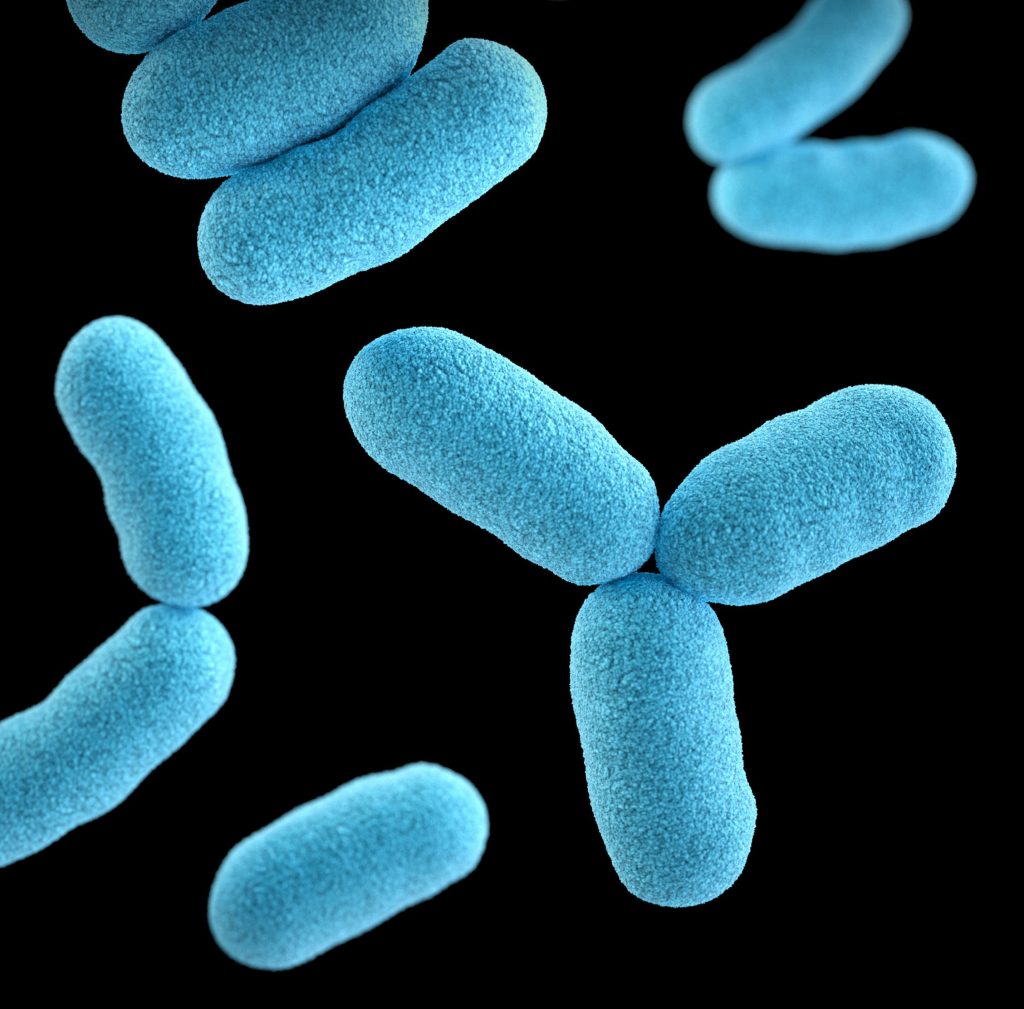
Cheese Culture 101: A Beginner’s Guide to the Heart of Great Cheesemaking Whether you’re a budding artisanal producer or simply curious about the science (and art) of cheese, you’re in the right place. Today, we’re diving into the world of cheese culture—the microscopic heroes that transform milk into the delicious wheels, wedges, and curds we know and love. What is Cheese Culture? Put simply, cheese culture refers to the beneficial bacteria added to milk during the cheesemaking process. These bacteria perform a range of essential tasks, including acidifying the milk, developing flavors, and shaping the final texture of the cheese. Without the right culture, your cheese might lack depth, complexity, or even proper structure. Common Types of Starter Cultures (with Temperature Ranges) Mesophilic Cultures Ideal Temperature Range: ~86°F (30°C) — Typically perform well between 70–90°F (21–32°C). Cheese Examples: Cheddar, Gouda, Colby, and other semi-hard to hard cheeses. Key Traits: Mesophilic bacteria thrive at moderate temperatures. They’re often used by beginners and form the base for many popular cheese varieties. Thermophilic Cultures Ideal Temperature Range: 104–113°F (40–45°C) — Some can go slightly higher (up to ~116°F/47°C) depending on the recipe. Cheese Examples: Mozzarella, Parmesan, Romano, and other Italian-style cheeses. Key Traits: Thermophilic bacteria love higher temperatures, making them perfect for cheeses that need warmer curd cooking. They also help develop hard, long-aged cheeses with robust, complex flavors. Adjunct Cultures Purpose: Used alongside primary mesophilic or thermophilic cultures. Examples: Brevibacterium linens (for washed-rind cheeses like Limburger). Propionibacterium freudenreichii (for Emmental and Swiss cheeses’ characteristic holes). Surface-ripening yeasts or molds (like Geotrichum candidum). Key Traits: Adjunct cultures add unique flavors, rind characteristics, and distinctive textures. Think of them as the “secret sauce” to crafting specialty cheeses. Why Do We Need Cheese Culture? Flavor and Aroma Development Cultures break down lactose (milk sugar) into lactic acid and other compounds that create the characteristic tang, nutty notes, or buttery flavors we adore in cheese. Over time, these microbes also help produce aroma compounds that make each cheese variety distinct. Texture Formation The acidification process driven by cheese cultures helps milk proteins form curds and expel whey. Different bacteria combinations yield different textures—from the gooey stretch of mozzarella to the crumbly form of feta. Protection from Harmful Bacteria Beneficial bacteria present in cheese cultures also outcompete harmful microbes. They keep the cheesemaking environment safe and stable, reducing the risk of spoilage or contamination. The Cheesemaking Process with Cultures Heat and Prepare Milk Warm the milk to the recommended temperature for your chosen culture (e.g., ~86°F/30°C for mesophilic, ~108°F/42°C for thermophilic). Add Starter Culture Sprinkle the recommended amount of culture (often sold as freeze-dried powder) onto the milk. Let it rehydrate for a few minutes before gently stirring. Ripening Period Let the milk “ripen” so the bacteria can start converting lactose into lactic acid. This sets the stage for flavor and texture. Coagulation with Rennet Add rennet to form curds. The lactic acid from the culture, plus enzymes in the rennet, create a cohesive curd mass. Cutting and Cooking Curds Cut the curds to release whey. Depending on the cheese, gently stir or “cook” the curds at a specific temperature to expel more whey and firm them up. Draining, Salting, and Molding Drain the curds. Some cheeses are salted directly in the vat; others are salted after molding. Pressing and molding shape the cheese. Aging (or Fresh Consumption) Some cheeses require weeks or months of aging to develop complexity. Others—like fresh mozzarella—are best enjoyed right away. Storing and Handling Cheese Cultures Refrigerate or Freeze: While many freeze-dried cultures can be stored short-term at room temperature, keeping them in the freezer preserves their viability. Seal Properly: Reseal packets tightly, or transfer leftovers into an airtight container. Monitor Expiration Dates: Over time, bacterial activity decreases, weakening the culture’s effectiveness. Troubleshooting Common Culture Challenges Weak Flavor Development Possible Cause: Old or improperly stored culture. Solution: Use fresh cultures and confirm expiration dates. Slow or Incomplete Curd Formation Possible Cause: Incorrect milk temperature or insufficient bacterial activity. Solution: Verify you’re at the right temperature range (F and °C) and allow enough ripening time. Off-Flavors or Odors Possible Cause: Contamination from unwanted bacteria or molds. Solution: Sterilize equipment, ensure proper hygiene, and store cultures correctly. Runny or Overly Moist Cheese Possible Cause: Excessive stirring, too-quick draining, or incorrect culture usage. Solution: Adjust stirring times, drain gently, and confirm you’re using the correct culture for your cheese recipe. Top Tips for Cheesemaking Success Use Quality Milk Fresh, high-quality milk (pasteurized or raw, as permitted by local regulations and safety standards) can make all the difference. Measure Accurately Even small variations in culture amounts can significantly impact flavor and texture. Maintain Consistent Temperatures Precise temperature control ensures your bacterial cultures thrive, whether mesophilic or thermophilic. Keep it Clean Thorough sanitation prevents unwanted microbes from spoiling your cheese. Document Your Process Keeping notes on culture type, timing, and temperatures helps replicate successes and avoid future mistakes. Ready to Take the Next Step? Cheese culture is where flavor, texture, and tradition converge. By understanding the basics—from mesophilic vs. thermophilic cultures to proper storage and best practices—you’ll be well on your way to creating artisan cheeses that truly stand out. At DairyCraftPro, we’re dedicated to helping both hobbyists and professionals craft the best dairy products possible. From high-quality starter cultures and rennets to expert tips and a supportive community, we’re here to guide you every step of the way. Stay tuned for more in our cheesemaking blog series, and let us know in the comments if there’s a specific cheese, topic, or technique you’d love to explore next! Want more details? Check out our DairyCraftPro resources for equipment, cultures, and expert advice. Join our online community for recipes, troubleshooting tips, and cheese-friendly camaraderie. Happy cheesemaking! Remember: every great cheese starts with the perfect culture—so choose wisely, experiment boldly, and have fun. Carroll, Ricki. Home Cheese Making: From Fresh and Soft to Firm, Blue, Goat’s Milk, and More. Caldwell, Gianaclis. Mastering Artisan Cheesemaking: The Ultimate Guide
Italy’s Iconic Cheeses: Parmesan, Mozzarella, and Beyond
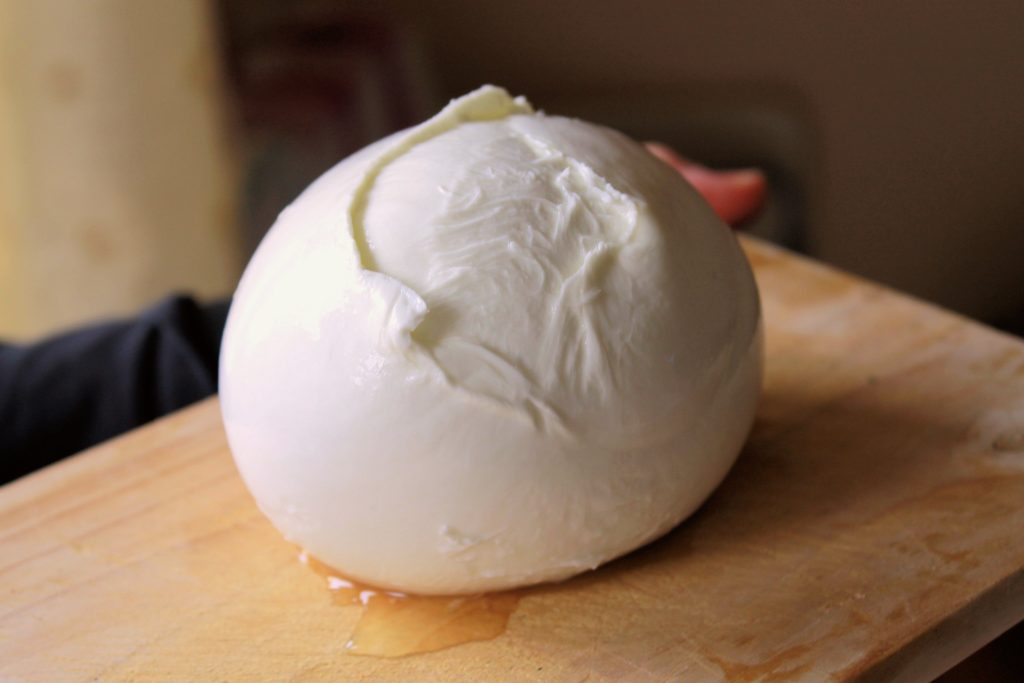
Italy’s Iconic Cheeses: Parmesan, Mozzarella, and Beyond Italy is synonymous with culinary excellence, and its cheeses are among the most celebrated in the world. From the nutty complexity of Parmesan to the creamy delight of Mozzarella, Italy’s cheese-making tradition reflects centuries of artistry, passion, and a deep connection to the land. In this blog, we explore the stories behind some of Italy’s most iconic cheeses and their profound influence on global cuisine. Parmesan (Parmigiano Reggiano) A Cheese of Royal Status Parmigiano Reggiano, often referred to as the “King of Cheeses,” has been crafted in Italy since the Middle Ages. Its production is tightly regulated by the Parmigiano Reggiano Consortium, ensuring authenticity and quality. Region of Origin: Emilia-Romagna, particularly Parma, Reggio Emilia, Modena, and parts of Bologna and Mantua. Production Process: Made from raw cow’s milk, it undergoes natural fermentation and is aged for a minimum of 12 months, though some wheels age for 24 months or more, enhancing complexity. Flavor Profile: Aged Parmesan has a granular texture with nutty, savory, and slightly fruity notes. Culinary Uses Grated over pasta, risottos, and soups. Eaten as a standalone snack with balsamic vinegar or honey. Shaved into salads or paired with fresh fruits like pears. Mozzarella The Quintessential Fresh Cheese Mozzarella, a staple in Italian kitchens, is cherished for its delicate, milky flavor and soft, elastic texture. Its versatility makes it an essential ingredient in countless dishes. Types: Mozzarella di Bufala: Made from water buffalo milk, primarily in Campania. Known for its rich, tangy flavor. Fior di Latte: Made from cow’s milk, offering a milder taste. Production Process: Mozzarella is made through a process called pasta filata, where curds are heated and stretched until they achieve the characteristic elasticity. Freshness Factor: Best consumed within a few days of production to enjoy its delicate, milky taste. Culinary Uses Topping for pizzas like the classic Margherita. Layered in caprese salads with fresh tomatoes and basil. Melted into lasagnas or stuffed into arancini. Beyond the Classics: Other Iconic Italian Cheeses Gorgonzola Type: Blue cheese with creamy or crumbly textures. Region of Origin: Lombardy and Piedmont. Flavor Profile: Rich and tangy, with a distinctive sharpness from blue mold veins. Uses: Perfect for sauces, salads, or served with nuts and honey. Pecorino Romano Type: Hard cheese made from sheep’s milk. Region of Origin: Central and Southern Italy. Flavor Profile: Salty, sharp, and intense. Uses: Traditionally grated over pasta dishes like Cacio e Pepe. Provolone Type: Semi-hard cheese with variations ranging from mild to sharp. Region of Origin: Southern Italy. Flavor Profile: Smoky, tangy, and buttery. Uses: Excellent for sandwiches, pizzas, and charcuterie boards. Ricotta Type: Fresh, creamy cheese made from whey. Region of Origin: Throughout Italy. Flavor Profile: Mild, slightly sweet, and creamy. Uses: Fills ravioli, cannoli, and lasagna layers; also used in desserts like ricotta cheesecake. The Craft of Italian Cheese-Making Italian cheese-making is deeply rooted in tradition, with methods passed down through generations. Many cheeses hold Protected Designation of Origin (PDO) status, ensuring that they are produced in specific regions using traditional techniques. Key Elements of Italian Cheese Craftsmanship Regional Ingredients: Milk quality varies by region, influenced by climate, geography, and animal diet. Aging Techniques: Aging rooms (caves) with controlled humidity and temperature contribute to unique flavors. Cultural Significance: Cheese-making is woven into Italian heritage, celebrated through festivals and culinary traditions. Global Influence of Italian Cheeses Italian cheeses are integral to global cuisine, enhancing dishes from pizzas to gourmet desserts. They’ve inspired countless imitations, but nothing compares to the authenticity of those crafted in Italy. Exports: Italian cheeses are exported worldwide, with Parmesan, Mozzarella, and Gorgonzola leading the charge. Pairing Suggestions: Pair Italian cheeses with fine wines like Chianti, Prosecco, or Barolo for an authentic tasting experience. Conclusion Italy’s cheese heritage is a testament to its dedication to quality, tradition, and innovation. From the simplicity of fresh Mozzarella to the bold character of Gorgonzola, these cheeses are more than just ingredients—they’re cultural treasures. Whether enjoyed on their own or incorporated into culinary creations, Italian cheeses bring a slice of Italy’s rich gastronomic history to every table. Explore, savor, and celebrate the flavors of Italy’s iconic cheeses.
Milk Fat Content: Influencing Flavor and Texture in Dairy Products
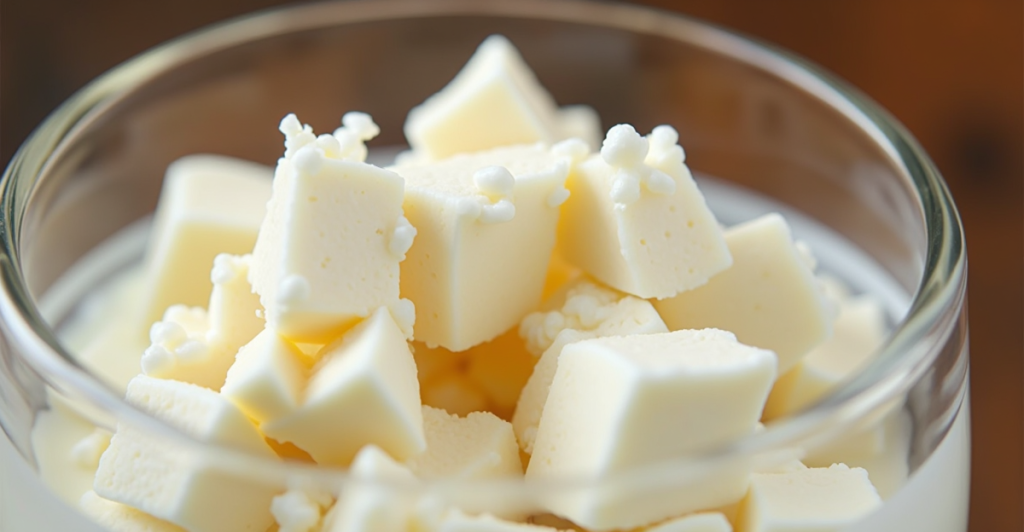
Milk Fat Content: Influencing Flavor and Texture in Dairy Products Milk fat plays a critical role in determining the flavor, texture, and overall quality of dairy products like cheese and yogurt. Its influence extends from the creaminess of yogurt to the mouthfeel and richness of aged cheeses. This article explores the importance of milk fat in dairy production, the science behind its role, and practical tips for managing fat content to achieve desired outcomes. What is Milk Fat? Milk fat is a complex mixture of lipids, primarily composed of triglycerides, along with phospholipids, free fatty acids, and fat-soluble vitamins. It is found in milk as small globules surrounded by a membrane, which helps stabilize the emulsion. Composition of Milk Fat Triglycerides: Account for 98-99% of milk fat. Fatty Acids: Include saturated, monounsaturated, and polyunsaturated fats. Phospholipids: Aid in emulsification and contribute to texture. Fat-Soluble Vitamins: Provide essential nutrients, including vitamins A, D, E, and K. Factors Affecting Milk Fat Content Breed of Cow: Jerseys and Guernseys produce milk with higher fat content compared to Holsteins. Diet and Nutrition: High-energy diets and quality forage can enhance milk fat levels. Lactation Stage: Fat content tends to increase in late lactation. Seasonal Variations: Fat levels may fluctuate with changing feed availability and environmental conditions. Role of Milk Fat in Dairy Products 1. Flavor Development Richness and Complexity: Milk fat carries flavor compounds and contributes to the richness of dairy products. Flavor Precursors: During aging, fat breaks down into free fatty acids and other compounds, creating complex flavors in cheese. Aroma Enhancer: Fat helps dissolve and release volatile aroma compounds, enhancing sensory perception. 2. Texture and Mouthfeel Creaminess: Higher fat levels result in creamier textures in products like yogurt and soft cheeses. Body and Firmness: Milk fat contributes to the firmness of semi-hard and hard cheeses. Smoothness: Phospholipids in milk fat improve the smoothness of yogurt and custard-like cheeses. 3. Shelf Life and Stability Oxidation Resistance: Milk fat contains antioxidants like vitamin E, which help extend shelf life. Moisture Retention: Fat reduces moisture loss, enhancing the stability of aged cheeses. Managing Milk Fat for Desired Outcomes In Cheese Production Standardization: Adjust milk fat content to match the requirements of specific cheeses. For example: High-Fat Cheeses: Triple-cream Brie, Camembert, or mascarpone for their luxurious richness. Medium-Fat Cheeses: Gouda and Havarti, which strike a balance between creaminess and firmness. Low-Fat Cheeses: Cottage cheese, part-skim mozzarella, or ricotta for lighter, healthier options. Fat-to-Protein Ratio: Maintain an optimal ratio (typically 1:1) for balanced texture and flavor development. Ripening Effects: Higher fat content accelerates ripening, leading to creamier and more flavorful aged cheeses. In Yogurt Production Creamy Texture: Use whole milk or cream-enriched milk for thick and indulgent yogurt varieties. Low-Fat Options: Skim or low-fat milk creates lighter, tangier yogurts. Homogenization: Ensures uniform fat distribution, preventing separation and creating a smooth texture. Techniques for Adjusting Milk Fat Content Cream Separation and Blending: Use a cream separator to adjust fat content by removing or adding cream. Standardization: Mix batches of milk with varying fat levels to achieve the desired percentage. Fortification: Add cream or milk powder to boost fat levels for specific products. Filtration Technology: Ultrafiltration and microfiltration can concentrate milk components, including fat. Practical Applications in Dairy Production Case Study: Optimizing Fat for Cheddar Cheese A dairy processor increased the fat content in milk from 3.5% to 4.2% for Cheddar production. This adjustment resulted in: Improved Yield: A 7% increase in cheese output. Enhanced Flavor: Richer, creamier flavor after aging. Better Texture: Firmer curds and smoother slices. Case Study: Low-Fat Greek Yogurt Using milk with 1.5% fat content, a yogurt producer achieved: Reduced Calories: A lighter product catering to health-conscious consumers. Consistent Quality: Smooth texture maintained with stabilizers like pectin. Challenges in Managing Milk Fat Consistency Issues: Variations in milk fat levels due to feed, season, or cow breed can impact production. Oxidation Risks: High-fat products are more prone to oxidative rancidity if not stored properly. Consumer Preferences: Balancing health trends favoring low-fat products with the demand for indulgent, high-fat options. Conclusion Milk fat is a cornerstone of flavor, texture, and quality in dairy products. By understanding its role and learning to manage its content effectively, producers can create cheeses and yogurts that meet diverse consumer expectations while optimizing production efficiency. Whether it’s crafting a triple-cream Brie or a low-fat Greek yogurt, mastering milk fat management is key to delivering exceptional dairy products. References Walstra, P., Wouters, J. T. M., & Geurts, T. J. (2006). Dairy Science and Technology. CRC Press. Fox, P. F., & McSweeney, P. L. H. (2017). Cheese: Chemistry, Physics, and Microbiology. Springer. Kosikowski, F. V. (1982). Cheese and Fermented Milk Foods. Cornell University. Tamime, A. Y., & Robinson, R. K. (2007). Yoghurt: Science and Technology. Woodhead Publishing. University of Wisconsin-Madison Dairy Science Department: Research on milk fat’s impact on flavor and texture.
France’s Cheese Heritage: A Journey Through Famous French Cheeses
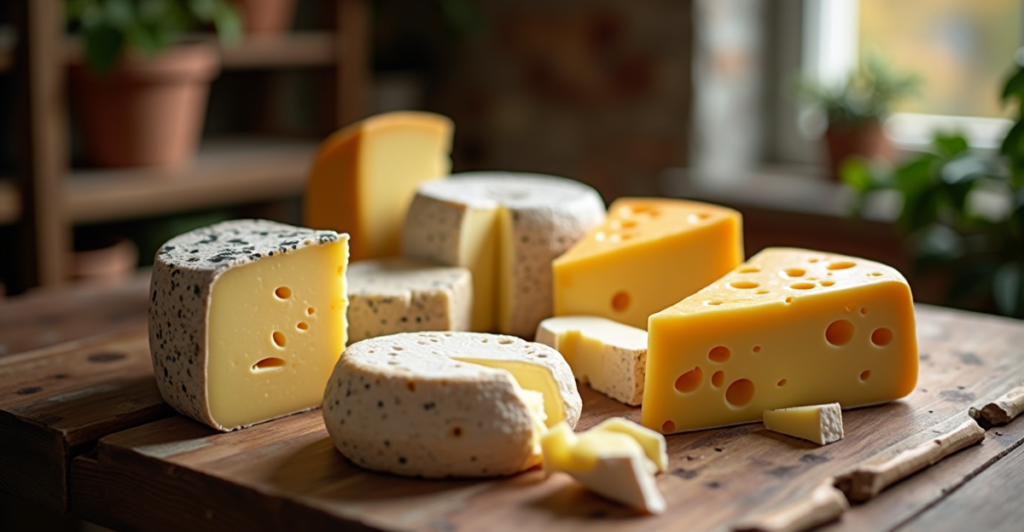
France’s Cheese Heritage: A Journey Through Famous French Cheeses France is synonymous with cheese, boasting a rich and diverse heritage that has cemented its place as a global leader in cheese culture. With over 1,200 varieties of cheese, ranging from creamy and mild to sharp and pungent, France’s cheesemaking tradition reflects its agricultural diversity, regional identities, and centuries-old expertise. This blog takes you on a journey through the origins, characteristics, and global influence of some of France’s most renowned cheeses. The Origins of French Cheesemaking Ancient Beginnings Cheesemaking in France dates back to Roman times, when early techniques were used to preserve milk. Monasteries in the Middle Ages became pivotal centers for refining cheese recipes, with monks experimenting to create the distinct flavors we recognize today. Regional Diversity France’s varied climates and terrains—from the lush pastures of Normandy to the mountainous regions of the Alps—have influenced the development of unique cheese types. The French term “terroir” encapsulates how the land, climate, and traditional practices shape the flavor and texture of cheeses. Protected Designations Many French cheeses are protected under the Appellation d’Origine Contrôlée (AOC) system, ensuring that they are produced in specific regions following traditional methods. Examples include Roquefort, Camembert de Normandie, and Comté. Exploring France’s Most Famous Cheeses 1. Brie de Meaux Region: Île-de-France Characteristics: Soft, creamy texture with a bloomy white rind and a mild, buttery flavor. History: Known as the “King of Cheeses,” Brie de Meaux has been enjoyed since the 8th century and was a favorite at the court of Charlemagne. Global Impact: Often imitated, Brie’s creamy richness makes it a staple on cheese boards worldwide. 2. Roquefort Region: Occitanie Characteristics: Blue-veined cheese made from sheep’s milk, with a tangy, salty flavor and a crumbly texture. History: Legend says a shepherd accidentally discovered Roquefort when he left his bread and cheese in a cave. Aging Process: Aged in the natural limestone caves of Roquefort-sur-Soulzon, where the unique microclimate fosters the development of Penicillium roqueforti mold. Global Impact: One of the most famous blue cheeses, often hailed as the “cheese of kings and popes.” 3. Camembert de Normandie Region: Normandy Characteristics: Soft, creamy cheese with a white bloomy rind and earthy, mushroom-like undertones. History: Created in the late 18th century by Marie Harel, a farmer who refined Brie-making techniques. Global Impact: Camembert has become a symbol of French cheese, inspiring countless variations worldwide. 4. Comté Region: Franche-Comté (Jura Mountains) Characteristics: Hard, cooked cheese with a dense texture and nutty, slightly sweet flavor. Production: Made from raw cow’s milk and aged for 4 to 36 months in underground cellars. Global Impact: A versatile cheese used in cooking, snacking, and pairing with wine. 5. Époisses de Bourgogne Region: Burgundy Characteristics: Soft, washed-rind cheese with a pungent aroma and a creamy, almost liquid interior. History: Originally created by monks in the 16th century. Production: Washed with Marc de Bourgogne, a local brandy, during the aging process, giving it its strong aroma. Global Impact: Celebrated as one of the most flavorful cheeses, Époisses is a true representation of Burgundy’s rich culinary heritage. The Cultural Significance of Cheese in France Daily Life: Cheese is an integral part of French cuisine, often served as a separate course before dessert. Cheese Platters: A traditional French cheese platter includes a variety of textures and flavors, typically accompanied by bread and wine. Festivals: Many regions in France celebrate their cheese heritage with festivals, such as the Fête du Brie and the Fête du Fromage. French Cheese and Wine Pairings Brie de Meaux: Pairs well with Champagne or light red wines like Pinot Noir. Roquefort: Complements sweet wines like Sauternes to balance its saltiness. Camembert de Normandie: Best with dry ciders or full-bodied red wines like Bordeaux. Comté: Matches beautifully with white wines such as Chardonnay or Vin Jaune. Époisses de Bourgogne: Pairs exquisitely with Burgundy wines like Pinot Noir. Global Influence of French Cheese Imitation and Inspiration French cheese-making techniques have inspired producers worldwide, leading to the creation of “Brie-style” or “Camembert-style” cheeses in countries like the U.S., Australia, and Italy. Exports France exports over 700,000 tons of cheese annually, with major markets including the U.S., Germany, and the U.K. French cheeses are a symbol of luxury and authenticity, often featured in high-end culinary experiences globally. Challenges Facing French Cheesemaking Industrialization The rise of mass-produced cheeses has put pressure on traditional artisans to compete on price. However, many AOC-certified cheeses have maintained their artisanal roots, ensuring quality and authenticity. Climate Change Changing weather patterns affect pasture quality, which in turn impacts milk composition and cheese flavor. Global Competition While French cheese remains iconic, producers face growing competition from countries like Italy, Switzerland, and the U.S. Conclusion France’s cheese heritage is a testament to its rich history, regional diversity, and dedication to craftsmanship. Each cheese tells a story of its terroir, its people, and its centuries-old traditions. Whether you’re savoring a creamy Brie, a pungent Époisses, or a nutty Comté, French cheeses offer an unparalleled sensory experience that has shaped global cheese culture. As we celebrate the legacy of French cheesemaking, let’s also acknowledge the artisans who continue to preserve and innovate within this storied tradition. From the rolling hills of Normandy to the caves of Roquefort, France’s cheese heritage remains a treasure to be savored.
